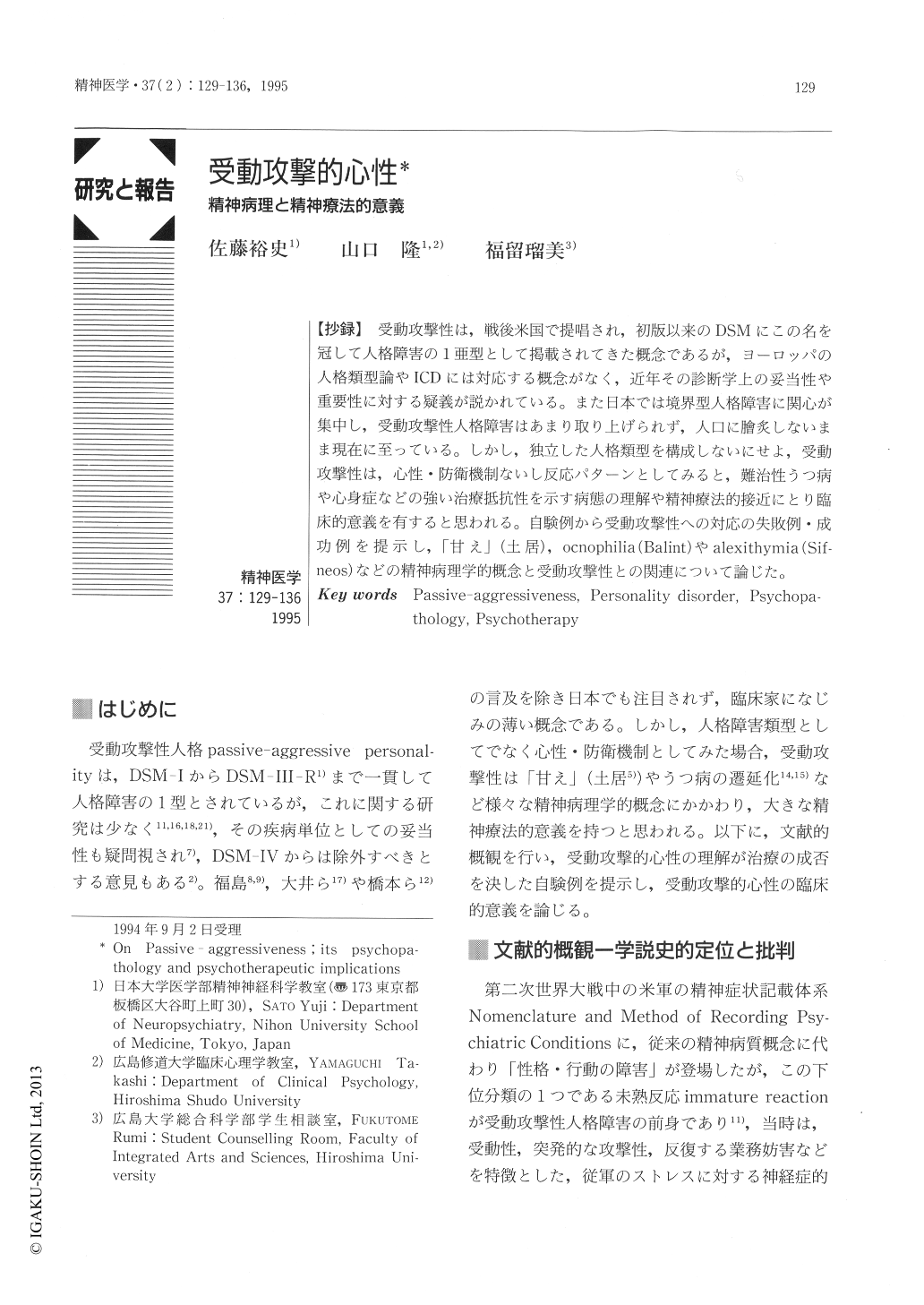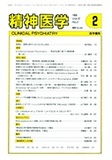Japanese
English
- 有料閲覧
- Abstract 文献概要
- 1ページ目 Look Inside
【抄録】受動攻撃性は,戦後米国で提唱され,初版以来のDSMにこの名を冠して人格障害の1亜型として掲載されてきた概念であるが,ヨーロッパの人格類型論やICDには対応する概念がなく,近年その診断学上の妥当性や重要1生に対する疑義が説かれている。また日本では境界型人格障害に関心が集中し,受動攻撃性人格障害はあまり取り上げられず,人口に膾炙しないまま現在に至っている。しかし,独立した人格類型を構成しないにせよ,受動攻撃性は,心性・防衛機制ないし反応パターンとしてみると,難治性うつ病や心身症などの強い治療抵抗性を示す病態の理解や精神療法的接近にとり臨床的意義を有すると思われる。自験例から受動攻撃性への対応の失敗例・成功例を提示し,「甘え」(土居),ocnophilia(Balillt)やalexithymia(Sifneos)などの精神病理学的概念と受動攻撃性との関連について論じた。
There seems to be a tendency to disregard the passive-aggressive personality disorder in both the United States and Japan since its diagnostic validity as a nosological entity has been doubted and more attention has been paid to the border-line personality disorder. However, passive-aggressiveness as a defense mechanism or a reaction pattern is a concept in psychotherapy theory worthwhile keeping in mind for treating difficult cases, e.g. the refractory depressives or psychosomatic patients.
Two clinical vignettes, one successful and one unsuccessful, are presented, in which management of passive-aggressiveness was crucial. First, a 42-year-old male Japanese American, suffering from cyclothymic disorder, interrupted treatment as his therapist failed to understand his passive-aggressiveness as a manifestation of his long-abandoned dependency need=Amae (Doi). Second, a 21-year-old male student of severe dysthymia and alopecia areata overcame his emotional as well as physical problems through the help of psychotherapy which validated his passive-aggressive attitude.
Discussion is offered of Doi's concept of Amae as passive dependency need, which, we believe, underlies passive-aggressive behavior. Neglected Amae, along with feelings of resentment, seems to give rise to aggression which manifests itself under cover of passive maladaptive behavior. It is then shown that passive-aggressiveness complicates the clinical course of depression by way of dissatisfied ocnophilia (Balint), an object relation position involving the passive objectlove which is parallel to Amae. Psychopathological relevance of passive-aggressiveness to alexithymia (Sifneos), a psychological characteristic of psychosomatic patients, is also mentioned.
Fukushima suggested the relationship between passive-aggressiveness and Western culture that rejects the concept of Amae, and maintained that Westerners appear to despise passivity. It is postulated that as Western culture permeates Japanese traditional culture, in which Amae has been inherent and accepted as such, pathological Amae tends to be conceived of as passive-aggressive behavior.

Copyright © 1995, Igaku-Shoin Ltd. All rights reserved.


